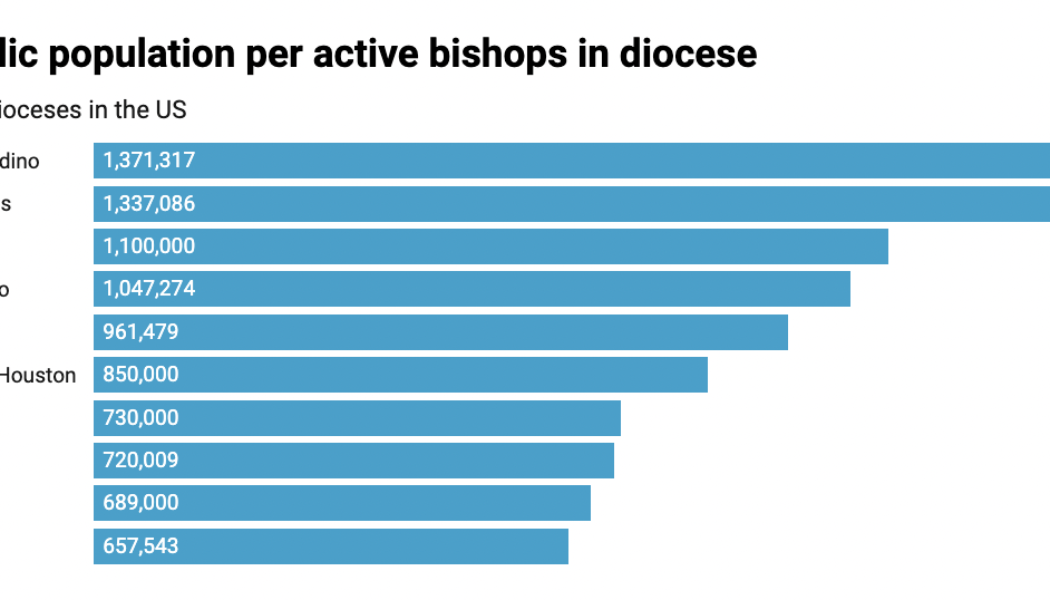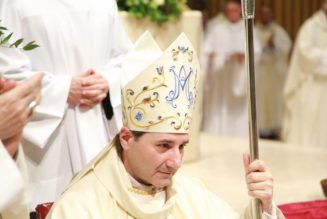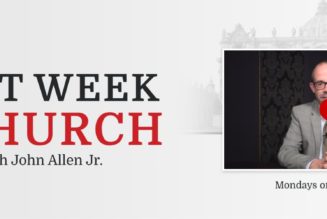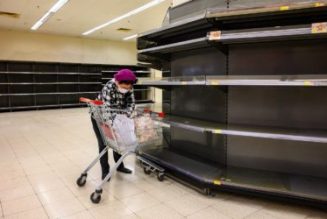Hey everybody,
Today is Tuesday in Lent’s fourth week, and you’re reading The Tuesday Pillar Post.
First, some good news — we have almost made it to the end of Lent!
Soon, in early April, we’ll celebrate Palm Sunday, Holy Week, and then the gift of Easter itself.
If you’ve been living an especially penitential Lent, you might have something of a countdown clock to Easter already going, with full knowledge of how many seconds more you’ll need to keep up your Lenten penances before it’s Easter somewhere. Or if you’ve had an especially fruitful Lent, full of keen spiritual insights and divine intimacy, I suppose you probably aren’t thinking about it coming to an end at all. I don’t know, that hasn’t been my experience!
But if you’re like me, and your Lent started off great, and has now gotten somewhat off track — or a lot off track — I’ve got a piece of advice.
Read (again) this interview we ran at the beginning of Lent, with Bishop Erik Varden of Trondheim, Norway. You might find it helps to remember what we’re aiming for in Lent. And you might find Bishop Varden’s advice helpful.
He says that if you get into Lent a little bit, and you find your penitential practice isn’t realistic, you could “redefine it in a way which is actually doable. That is an instance of humility, which is also a great virtue to practice during Lent.”
The news
Archbishop Edgar Peña Parra was in the Vatican City’s courtroom on Friday, giving testimony in the financial criminal trial of Cardinal Angelo Becciu and 9 other defendants connected to the Vatican Secretariat of State’s investment in a London property — an investment that cost the Holy See well north of 200 million euros.
Peña Parra told the courtroom that when he became Vatican sostituto, or chief of staff in 2018 — taking over for Becciu — Pope Francis urged him to get out of the investment, which he called a deception, while losing as little as money as possible.
Still, to actually get out of the deal, the Holy See paid 15 million euro to businessman Gianluigi Torizi, now on trial for embezzlement, fraud, extortion, and a lot else besides. And then, eventually, the Vatican sold its building at a huge loss. The entire investment lost a lot of money, as it happens.
Peña Parra told the court that the entire deal was something of a via crucis – a way of the cross.
“I did it, and if necessary I would do it again!” Peña Parra told the judges.
Indeed, Peña Parra confirmed that he’d asked another Vatican official, Monsignor Mauro Carlino — who is now on trial — to engage with a former Italian intelligence agent for the purpose of hacking Mammi’s cell phone.
Of course, Peña Parra did not have the legal authority to order electronic and personal surveillance on a Vatican bank director and others. But he was not shy about the fact that he did it.
Readers, this is a big deal. It is at least possible that Vatican City prosecutors will aim to file charges against Peña Parra, as they have filed against other top officials of both the Vatican’s Secretariat of State, and of ASIF, the Vatican’s financial security agency.
In fact, it is at least possible that the Italian government could look into charges against Peña Parra, given the stringency of Italian data privacy laws, and Peña Parra’s admissions in open court.
The whole thing is worth reading about — and you’ll only read in-depth coverage at The Pillar.
__
Before we move on, I’d like to offer a brief comment on this story. I’m often asked why Vatican officials in the London trial do the things they’ve done — or the things they’re alleged to have done.
Now, I don’t know Archbishop Peña Parra, and I can’t comment on him personally. But I can say that Vatican officials with a long history in diplomatic service, or other elements of curial service, can become accustomed to a role in which it really is their job to protect the institutions of the Church — especially in places in which those institutions fall under real and immediate risk of government persecution or other grave threat.
In a role like that, it can be easy to align the self-protection of institutions and personnel with the mission of the Church of itself — and that can happen, sometimes, without even realizing it. When that happens, it becomes easier for one to justify all manner of activity for the “good of the Church,” an idea which often means the good of some institutional apparatus or figure within the Church.
That’s not meant to mitigate culpability or diminish blame, where those things exist. Rather, it’s meant to consider motives — many of the Vatican churchmen in the London property debacle have no personal profit motive, but several of them have expressed that their actions were in service to the pope or the mission of the Church, and they seem to mean it. And my point is that’s possible.
Sure, we tend to think that these things might be about career advancement or security, and there might be something to that, but when you listen to many of the churchmen involved talk, they seem to believe that they were doing what they did for the good of the Church. And it is entirely possible – at levels of the Church – to be blinded to the right thing to do by a conflation of persons or institutions with the Gospel itself.
That’s worth remembering for all of us who aim to serve Christ and his Church.
—
Now here’s a good news story from the state of Minnesota.
Sexual abuse survivors have told me many times how difficult it is to find healing in the heart of the Church when one has been wounded in the life of the Church. Even among those who believe that the Church is the sacrament of their salvation — if it has also been a locus of trauma, especially through the action of a cleric, it can be very, very difficult to worship in the liturgies of the Church without real pain, and sometimes even panic.
The Archdiocese of St. Paul and Minneapolis, recognizing this cross, has partnered with a sexual abuse survivor so that Catholic who struggle with attending Mass can receive Communion in their home from another abuse survivor.
Paula Kaempffer, Outreach Coordinator for Restorative Justice and Abuse Prevention in the Archdiocese of St. Paul and Minneapolis, told The Pillar that the archdiocese wants to bring Christ to abuse survivors.
“People really want the Eucharist. They want to be fed by the Eucharist and healed by the Eucharist,” she told The Pillar.
But “many of them say, ‘I am Catholic to the core. I will always be Catholic, but I cannot walk inside a church,’” she explained.
So the archdiocese is aiming to help.
It wasn’t clear what role Cardinal Tagle had in the new department, especially after he was removed from his other role at international charity Caritas, where he’d been president since 2015.
It seemed that Tagle was a pro-prefect of his section in the new department, but it hasn’t been clear what that means in a Vatican dicastery led directly by the pope.
But the Holy See released some documents last week which confirmed that Tagle, the “pro-prefect” has pretty much full legal authority over the dicastery, suggesting that, really, he’s doing the same job under a different title, and that the pope’s leadership of the dicastery is not especially hands on.
What does that mean for Tagle’s future, especially as a number of high-profile Vatican cardinals prepare to retire? Time will tell.
But in the meantime, Luke Coppen breaks it all down.
—
Finally, here’s a pretty cool data story from The Pillar’s Brendan Hodge.
After the murder of LA auxiliary bishop David O’Connell last month, a number of Catholics have pointed out how few auxiliaries Los Angeles – the country’s largest diocese – actually has.
So Brendan Hodge pulled data from a couple of sources to put together some information on the auxiliaries appointed by Pope Francis.
New York, the country’s second-largest diocese, has seen seven consecrated since 2013. Chicago is next, followed by Washington, DC.
While L.A. has gotten some auxiliaries, it nevertheless has the second-highest Catholics-per-bishop ratio of any diocese in the country — and it’s second only to the neighboring Southern California diocese of San Bernardino. In fact, San Bernardino is one of three U.S. dioceses with more than one million Catholics, and no auxiliary bishops.
You can read all about the auxiliary state of affairs, right here. And you should, it’s pretty interesting.
And by the way — shortly after we published this report, we had to issue a big update, because the data set we used didn’t easily include U.S. bishops appointed as auxiliaries during the Francis pontificate, who subsequently became diocesan bishops. And there are 11 such bishops in the U.S. So Brendan and our team had to do some quick, manual pulls from some other data sets to get those guys into the mix.
Here’s the point — there are few places out there from which you can get data on Catholic life — most of it compiled heroically. But we believe that some of it can be better organized and more accessible. And Brendan is building some dashboards and tools for access to quick Catholic data.
When you subscribe, you help make that happen. That’s why we ask you to subscribe — so that we can do cool stuff in service to the Church and our readers.
We’re moving … again
If you’ve been reading The Pillar for a while, you probably remember that we launched our project in January 2021 on the hosting platform Substack. But by the middle of last year, we’d begun to outgrow some of the limitations of that platform, and we wanted to make the experience for our subscribers much better.
So last September we made some big changes. We launched a new, much-improved website that made navigation and archiving easier, and that was much more attractive than our original Substack platform.
This was a good move for us, but there were trade-offs.
Some of you miss our old commenting system, which was superior to the one we have now. And the subscriber-management system we’ve been using is a bit wonky, and that’s caused some of you a little difficulty either logging in or staying subscribed.
Plus, we effectively took on ourselves the customer-service element of the new subscriber-management system, and while we like to think we’re good journalists, we’re not customer service pros. Our managing editor, Michelle La Rosa, has taken on a lot of that subscriber-management work — and that means she’s doing less of the reporting you love.
So after we moved, Substack approached us about working with them to create a kind of hybrid platform opportunity. We’d get to keep the look and functionality of our current site, but with some of the best things about Substack — great commenting systems, great customer service for subscribers, and some new things, like some chat functions we’ll experiment with for subscribers.
So after working on this with Substack for a while, we’re planning to go back to Substack as our web platform pretty soon. In fact, the move could happen as early as this week — we’re still ironing out some of the final wrinkles in the site transfer.
When it happens, this should not really affect you too much. It’s possible our site will be down for a couple of hours during the transfer. After that, you might need to login to the site again to comment, and Substack will explain to you how to do that. It’s pretty intuitive. You should not need to subscribe again or anything like that. And if you have problems, we’ll be there to help with the transition, as will the customer service team at Substack.
Consider this a notice that we’re making a move, but also consider that this shouldn’t impact you very much at all. When Substack approached us, we told them our main concern is that our readers and subscribers should only notice positive changes — that this shouldn’t be a headache for you guys, or even that you necessarily will notice. We’re satisfied that’s the case. So be advised, but don’t worry. And we’ll keep you posted.
Varia
Today, March 21, is recognized by disability advocates as World Down Syndrome Day. The day is chosen because Down syndrome is caused by a trisomy of the 21st human chromosome. While most people have two copies of the 21st chromosome in their DNA, people with Down syndrome have three. That causes intellectual disabilities, some health problems, and some of the other things which characterize people with Down syndrome.
If you’d like to read some Catholic voices, insights, and resources on Down syndrome, read this from The Pillar. It’s got some cool stuff in it.
But I mention World Down Syndrome Day because, as many of you know, I have two children with Down syndrome. I write about them from time-to-time here in this newsletter, and it seems appropriate on a day connected to them to mention them again.
Here’s what I’d like to say: Knowing and loving people with disabilities is the great gift of my life. It’s made me a better father (to all three of my kids), a better husband, a better journalist, and a better Christian.
How?
Well, here’s one way. If you live in a family with two people who have difficulty speaking, and who move pretty slowly from thing to thing, and who have some trouble transitioning, and are REALLY EXCITED about a lot of things in their life, you necessarily grow in patience. Not because you’re good, or even trying to be good, but because a lot of things take a very long time.
It also means you spend a lot of time listening to people who are trying to say something important to them, but with great difficulty. You learn to let that happen — to give them the space to reveal their hearts and minds. And you learn that the best gift with other people is time, really — that to love is often to linger in the presence of other people, not hurrying them, or rushing along to the next thing, but allowing them to be who they are.
You learn that it is a gift just to be in the presence of other people made in the image and likeness of God — and that all people can reveal the image of God to us in ways that are unexpected and profound.
Loving people with disabilities has helped me, if nothing else, to see the glory of God reflected in the hearts of other people, and helped me to know that we honor and glorify God by loving, honoring, and respecting his creation — his beloved sons and daughters, made in his image.
There’s a lot else I might say about Down syndrome, and I often do. But for the moment, I’d encourage this: No matter who you know or love on the periphery, someone who moves a bit more slowly in the world, or who struggles to be heard, or who often goes unseen — God wants to gift you with their presence. God is waiting, often to reveal his glory to us in the hearts of his beloved children, and especially those whose lives are marked by some poverty, some cross, or some trial.
We seek out and find God in the Eucharist and the sacraments, and rightly so. But we can find the heart of Jesus also in the hearts of the Father’s beloved children — and be surprised by the glory of God magnified in the lives, and hearts, and faces of the lowly.
—
The seal
A bill in the Delaware legislature proposes to remove clerical religious protections in the sacrament of confession, to require priests to act as mandatory reporters of child abuse and neglect, even when they learn about allegations of such in the sacrament of confession.
The bill aims, of course, to protect children: to see that priests don’t withhold information which could protect them from being abused.
The problem, the Diocese of Wilmington, Delaware has said, is that the sacramental seal is inviolable, the priests keep the seal for the sake of the integrity of confession, and that without the seal, Catholics would not be free to seek the mercy of God in the confessional.
The diocese has also pointed out that since most confessions are anonymous, it’s unlikely that priests could meet the requirement of the proposed law anyhow, and that even if they could — they wouldn’t.
Priests won’t discriminate in the confessional between sins which should be reported and sins which should not be. In fact, the Church says they can’t. For the good of the sacrament itself, the seal is the seal is the seal.
Priests protect the sacramental seal because doing so allows Catholics to come confidently to confess their sins to God, to have assurance of God’s mercy through the actions of the priest. Without the seal, Catholics would lack confidence that whatever they bring to God would not spill out into the public square.
Most of us can understand that with regard to ordinary everyday sins. But most of us — all of us, I hope — also want children to be protected from abuse, and so there are some Catholics who think the Delaware bill is a good thing. Among them is even a retired priest of Milwaukee, a canon lawyer, who wrote an op-ed this month in the Delaware News Journal advocating the Delaware Law.
It is surprising to see a priest – a canonist no less – fail to understand the importance of the sacramental seal. Its inviolability does mean, perhaps, that priests who might report a very small number of crimes are not able to do so. But the likelihood of it being violated means that no one would confess matters which might get them in legal trouble, meaning that the law aimed at protected children would become a deterrent from a conversation in which priests could urge anyone harming children to turn themselves in, get their children to a safe space, and repent of their wrongdoing.
And by the way, any time a child reports in the confessional being abused, a prudent priest will encourage him to talk with the priest immediately after confession. Priests know how to handle these matters without violating the seal — and they often do handle them well, without violating the seal. And those who don’t handle these matters well now are not going to be caught by a law which, given the nature of the circumstances, is basically not investigable and unenforceable.
In short, the law would simply ensure that priests would be absent from any opportunity to help abusers set things to right, or any moment in which they might be encouraged to face justice for the good of their children.
For my money, that seems like a bad bet: if the law passes, the Delaware legislature can be proud that it has the appearance of having done something.
But the appearance of doing something isn’t the same as doing anything. At The Pillar, our commitment to ending the scourge of child abuse should be evident. But Delaware’s proposal is a panacea, which would actually drive abusers deeper underground, and take from the Church any opportunity to call them to accountability.
That doesn’t protect children.
And a priest, of all people, should know that.
—
Today is customarily the feast of the transitus of St. Benedict — the date of the great saint’s death. The feast was moved recently to July, in order that it can be celebrated outside of Lent.
But today is still a good day to ask for the intercession of St. Benedict, whose call to work and prayer has been the backbone of much of Christian culture and civilization in the West.
Here is St. Gregory’s extraordinary account of St. Benedict’s death:
“Six days before he died, he gave orders for his tomb to be opened. Almost immediately, he was seized with a violent fever that rapidly wasted his remaining energy. Each day his condition grew worse until finally, on the sixth day, he had his disciples carry him into the chapel where he received the Body and Blood of our Lord to gain strength for his approaching end. Then, supporting his weakened body on the arms of his brethren, he stood with his hands raised to heaven and, as he prayed, breathed his last.”
St. Benedict, pray for us. May each of us have a holy death, as he did.
Please be assured of our prayers, and please pray for us. We need it!
In Christ,
JD Flynn
editor-in-chief
The Pillar








